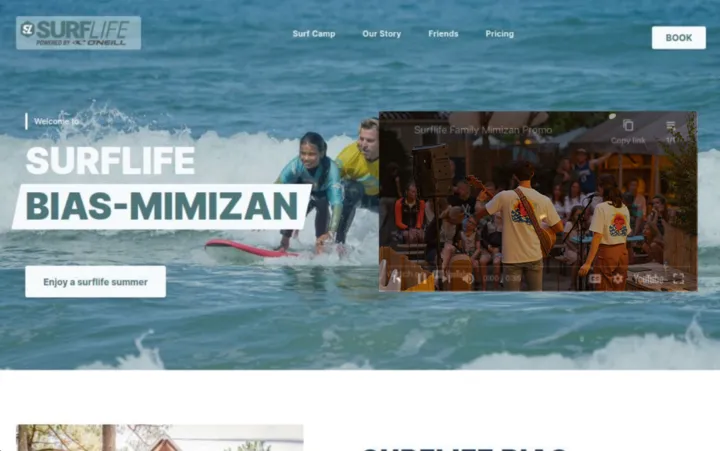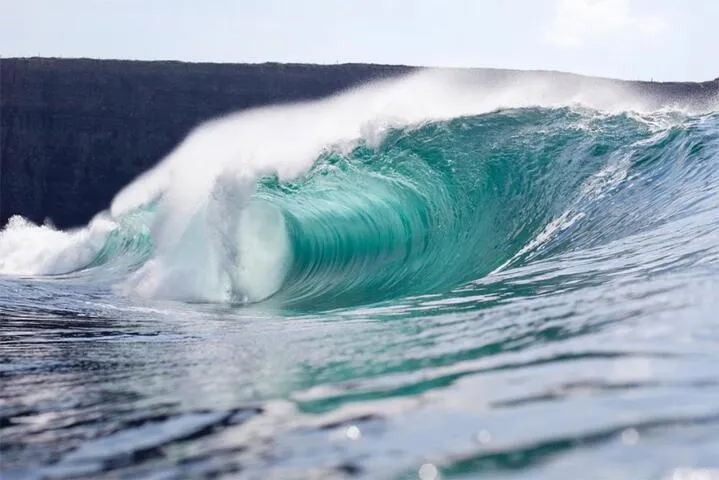Surfing is more than a sport—it’s a way of life that blends timing, intuition, and respect for the ocean. For decades, surfers depended on personal observation, local knowledge, and community word-of-mouth to understand conditions. Today, technology has completely transformed that relationship. With smartphones, GPS trackers, and AI-powered tools, modern surfing apps provide a digital layer that enhances decision-making, improves performance, and connects surfers across the globe.
But not all surfing apps are created equal. Some focus on real-time wave forecasts, while others are about performance tracking, AI coaching, or global weather visualization. In this review, we take an expert look at the top 5 surfing apps of 2025—Surfline, Magicseaweed, Windy, Dawn Patrol, and Surfline ReSurf—exploring their features, functionality, and why they matter to surfers of all levels.
The Role of Surfing Apps in Modern Surf Culture
Before diving into the reviews, it’s important to understand why these apps matter. Surfing is a sport that thrives on information: swell size, period, tide, wind direction, and even water temperature can determine whether a session is epic or wasted. Apps serve three main roles:
- Forecasting & Planning – Helping surfers decide when and where to surf.
- Performance Tracking – Logging waves, distances, and progression over time.
- Community & Coaching – Connecting surfers, sharing data, and offering guidance.
Each of the apps reviewed here contributes differently to these areas, which is why they complement each other rather than compete.
1. Surfline
Live Surf Cams and Forecasts
Surfline is the most widely recognized surf app in the world, known primarily for its network of over 1,000 live HD surf cameras. For many surfers, checking the app before leaving home has become as essential as grabbing their board. The ability to see conditions in real time—whether the waves are clean, messy, crowded, or flat—saves countless hours and ensures maximum time in the water.
The forecasting system is another hallmark. Surfline employs a mix of human meteorologists and AI-driven models to generate multi-day surf forecasts. These include swell size, swell direction, wave period, tide cycles, and wind data, giving surfers a complete picture of upcoming conditions.

Surfline Sessions and Performance Tools
Another innovative feature is Surfline Sessions, which integrates with GoPro cameras and Apple Watches. When activated, it automatically tracks waves surfed and syncs them with the nearest surf camera. Surfers can then watch replays of their rides, paired with GPS data showing speed, distance, and wave count. This blend of real-time footage and data analysis makes Surfline not just a planning tool but also a performance evaluation platform.
Community and Premium Features
Surfline also runs surf reports and editorial content, making it part forecasting app and part digital surf magazine. With premium subscriptions, surfers gain access to more camera feeds, extended forecast ranges, and unlimited video replays.
2. Magicseaweed (MSW)
Global Forecasting and Star Ratings
Magicseaweed, or MSW, has been a trusted name in surfing for years. Its global surf forecast coverage is one of its biggest strengths, with detailed swell models available for thousands of surf spots worldwide. The star rating system is its signature feature: waves are scored between one and five stars, providing surfers with a quick, at-a-glance measure of surf quality.
This simple but effective design has made MSW especially popular with surfers who want to quickly scan multiple locations when deciding where to surf.
Long-Range Planning and Swell Charts

In addition to daily surf reports, MSW excels in long-range forecasting, often projecting swell activity up to 10–12 days in advance. Its swell charts and global storm tracking allow surfers to see how faraway storm systems will generate waves that eventually reach their local break.
For traveling surfers, this is invaluable. A user can track a storm developing in the Pacific and plan a surf trip to Indonesia or Hawaii with confidence that waves will arrive in sync with their travel dates.
Integration with Surfline
Since its acquisition by Surfline, Magicseaweed has undergone design changes and integration. However, it continues to maintain its identity as a straightforward, forecast-first platform, beloved by surfers who prefer data clarity and minimal distractions.
3. Windy
Macro-Level Weather Visualization
Unlike Surfline or MSW, Windy is not exclusively a surf app. Instead, it is a professional-grade weather visualization platform that has found a massive following among surfers, sailors, and outdoor adventurers. Its primary feature is an interactive world map with overlays for wind, waves, pressure systems, and weather fronts.
For surfers, this means the ability to see global swell movements in real time. By adjusting map layers, surfers can visualize how swells generated by distant storms will move across oceans and arrive at local coastlines.
Customizable Overlays for Surfers
Windy allows users to toggle between various parameters, including wave height, wave period, swell direction, and wind strength. Advanced surfers often use these overlays to analyze conditions beyond what standard surf reports offer, giving them a more nuanced understanding of why a particular break will fire—or why it won’t.
Beyond Surfing
Because Windy is multi-disciplinary, it appeals to surfers who also kiteboard, windsurf, or sail. Its aerial wind forecasts and aviation-style visuals make it a unique tool that enhances a surfer’s holistic understanding of weather systems.
4. Dawn Patrol
Apple Watch Surf Tracking
Dawn Patrol is built for one purpose: tracking surf sessions in detail. It is designed to integrate seamlessly with the Apple Watch, using its GPS and motion sensors to automatically detect waves. The app measures wave count, ride distance, top speed, and paddle distance, logging each surf session into a detailed timeline.
This makes Dawn Patrol especially appealing for surfers who want quantitative insight into their performance. Unlike Surfline, which focuses on forecasts and video, Dawn Patrol is about personal progression.
Heat Maps and Session Analysis
One of Dawn Patrol’s most exciting features is the heat map system, which shows where in the lineup surfers caught their waves. This visualization helps surfers understand their positioning in relation to the break and can reveal patterns that improve future performance.
By syncing with Apple Health, Dawn Patrol also offers a fitness dimension, tracking calories burned, heart rate, and overall exercise statistics. For surfers who view their sessions as part of a broader fitness routine, this integration is invaluable.
5. Surfline ReSurf
AI Coaching and Video Analysis
The newest entry on this list, Surfline ReSurf, pushes surfing apps into the future by focusing on AI-driven coaching. The app uses uploaded videos of surf sessions and applies artificial intelligence to analyze movements, take-offs, and maneuvers. It then delivers feedback and personalized recommendations for improvement.
This is especially groundbreaking for surfers who don’t have access to in-person coaching. By combining data analytics with visual breakdowns, ReSurf democratizes surf coaching and progression.
Training Programs and Progression Tracking
ReSurf also features structured training modules, curated by professional surfers and coaches. Users can follow challenges, track progression milestones, and compare their performance over time.
This makes ReSurf more than a forecasting or logging tool—it is a digital surf coach, merging data and pedagogy in ways never before seen in the surf industry.
The Future of Surf Apps
The top 5 surfing apps reviewed here show the evolution of digital surfing. What started as simple tide charts has expanded into live video, GPS trackers, AI-driven analytics, and global weather modeling. The future points toward even more integration, with wearable devices, smart surfboards, and real-time AI-driven coaching becoming mainstream.
In the next few years, we may see apps offering real-time wave scoring, augmented reality training in the lineup, and hyper-localized micro-forecasts powered by drones and sensors.
Conclusion
Surfing apps have changed how surfers approach the ocean. Surfline provides unmatched live cams and forecasts, Magicseaweed simplifies global data into quick insights, Windy empowers surfers to see the bigger weather picture, Dawn Patrol helps track individual progress, and ReSurf ushers in the era of digital coaching.
Together, they don’t replace intuition and ocean knowledge but instead enhance them, helping surfers maximize their sessions, plan trips, and refine their craft. In a sport where every wave counts, these apps ensure surfers are more prepared and more connected than ever before.

















